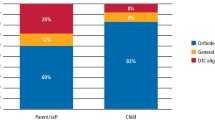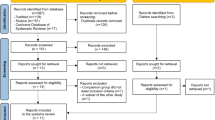Abstract
Introduction Obesity is a global epidemic, increasing the risk of many associated health issues.
Aim The aim of this clinical study was to investigate the acceptability and tolerability of an intraoral device, designed to facilitate weight loss.
Method Seven healthy obese participants were recruited. The device, which incorporated closed-field magnets with keepers to restrict mouth opening, was cemented to the participants' first molars. The participants were given a commercially available liquid diet for two weeks. The comfort and tolerability of the device were assessed using a quality of life questionnaire during review appointments at 1, 7 and 14 days and two weeks after device removal.
Results The participants reached a mean weight loss of 6.36 (SD = 3.79) kilograms, which represents approximately 5.1% of their body weight. The participants had trouble pronouncing some words and felt tense and embarrassed 'only occasionally'. The participants 'hardly ever' reported a change in taste sensation or felt uncomfortable drinking. However, participants indicated that they occasionally had discomfort and felt that life in general was less satisfying. Qualitative analysis showed that the participants were happy with the outcome and were motivated to lose more weight.
Conclusion The participants tolerated the device for a two-week period with satisfactory weight loss and were further motivated to continue their weight loss journey.
Key points
-
Obesity rates have increased at an alarming rate and nearly a third of the world's population is now classified as overweight or obese.
-
This study investigated the acceptability and tolerability of a novel intra-oral device to facilitate weight loss in obese patients.
-
Tolerance of the device was good, promoting weight loss during a two-week trial period.
This is a preview of subscription content, access via your institution
Access options
Subscribe to this journal
Receive 24 print issues and online access
$259.00 per year
only $10.79 per issue
Buy this article
- Purchase on SpringerLink
- Instant access to full article PDF
Prices may be subject to local taxes which are calculated during checkout


Similar content being viewed by others
Change history
10 December 2021
Editor's Note: an Author Correction to this article has been published: https://doi.org/10.1038/s41415-021-3719-z.
10 December 2021
A Correction to this paper has been published: https://doi.org/10.1038/s41415-021-3719-z
References
Hales C M, Carroll M D, Fryar C D, Ogden C L. Prevalence of obesity among adults and youth: United States, 2015-2016. NCHS Data Brief 2017; 288: 1-8.
Ahirwar R, Mondal P R. Prevalence of obesity in India: A systematic review. Diabetes Metab Syndr 2019; 13: 318-321.
Kelly T, Yang W, Chen C S, Reynolds K, He J. Global burden of obesity in 2005 and projections to 2030. Int J Obes (Lond) 2008; 32: 1431-1437.
Bray G A. Complications of obesity. Ann Intern Med 1985; 103(6(Pt 2)): 1052-1062.
Pi-Sunyer F X. Medical hazards of obesity. Ann Intern Med 1993; 119(7 Pt 2): 655-660.
Esfahani S B, Pal S. Obesity, mental health, and sexual dysfunction: A critical review. Health Psychol Open 2018; DOI: 10.1177/2055102918786867.
Finer N, Garnett S P, Bruun J M. COVID-19 and obesity. Clin Obes 2020; DOI: 10.1111/cob.12365.
Sattar N, McInnes I B, McMurray J J V. Obesity Is a Risk Factor for Severe COVID-19 Infection: Multiple Potential Mechanisms. Circulation 2020; 142: 4-6.
Tobias D K, Pan A, Jackson C L et al. Body-mass index and mortality among adults with incident type 2 diabetes. N Engl J Med 2014; 370: 233-244.
Torgerson J S, Hauptman J, Boldrin M N, Sjostrom L. XENical in the Prevention of Diabetes in Obese Subjects (XENDOS) study: a randomized study of orlistat as an adjunct to lifestyle changes for the prevention of type 2 diabetes in obese patients. Diabetes Care 2004; 27: 155-161.
Haemmingsson E, Johansson K, Eriksson J, Sundstrom J, Neovius M, Marcus C. Weight loss and dropout during a commercial weight-loss programme including a very-low-calorie diet, a low-calorie diet, or restricted normal food: observational cohort study. Am J Clin Nutr 2012; 96: 953-961.
Greenway F L, Bray G A. Combination drugs for treating obesity. Curr Diab Rep 2010; 10: 108-115.
Bray G A, Greenway F L. Current and potential drugs for treatment of obesity. Endocr Rev 1999; 20: 805-875.
Birkmeyer J D, Finks J F, O'Reilly A et al. Surgical skill and complication rates after bariatric surgery. N Engl J Med 2013; 369: 1434-1442.
Jakobsen G S, Smastuen M C, Sandbu R et al. Association of Bariatric Surgery vs Medical Obesity Treatment With Long-term Medical Complications and Obesity-Related Comorbidities. JAMA 2018; 319: 291-301.
Malinowski S S. Nutritional and metabolic complications of bariatric surgery. Am J Med Sci 2006; 331: 219-225.
Castelnuovo-Tedesco P, Buchanan D C, Hall H D. Jaw-wiring for obesity. Gen Hosp Psychiatry 1980; 2: 156-159.
Rodgers S, Burnet R, Goss A et al. Jaw wiring in treatment of obesity. Lancet 1977; 1: 1221-1222.
Goss A N. Management of patients with jaws wired for obesity. A review of 122 cases. Br Dent J 1979; 146: 335-339.
Bjorvell H, Hadell K, Jonsson B, Molin C, Rossner S. Long-term effects of jaw fixation in severe obesity. Int J Obes 1984; 8: 79-86.
Hall R. Obesity treatment aid (Google Patents). 2003. Available online at https://patents.google.com/patent/AU9212701A/en (accessed May 2021).
Kolotkin R L, Head S, Hamilton M, Tse C K. Assessing Impact of Weight on Quality of Life. Obes Res 1995; 3: 49-56.
Kolotkin R L, Head S, Brookhart A. Construct validity of the Impact of Weight on Quality of Life Questionnaire. Obes Res 1997; 5: 434-441.
Garrow J S, Gardiner G T. Maintenance of weight loss in obese patients after jaw wiring. Br Med J (Clin Res Ed) 1981; 282: 858-860.
Kark A E. Jaw wiring. Am J Clin Nutr 1980; 33(2 Suppl): 420-424.
Harding P E. Jaw wiring for obesity. Lancet 1980; 1: 534-535.
Hussain A S, Al Toubity M J, Elias W Y. Methodologies in Orthodontic Pain Management: A Review. Open Dent J 2017; 11: 492-497.
Marques L S, Paiva S M, Vieira-Andrade R G, Pereira L J, Ramos-Jorge M L. Discomfort associated with fixed orthodontic appliances: determinant factors and influence on quality of life. Dental Press J Orthod 2014; 19: 102-107.
Scheurer P A, Firestone A R, Burgin W B. Perception of pain as a result of orthodontic treatment with fixed appliances. Eur J Orthod 1996; 18: 349-357.
Bergius M, Berggren U, Kiliaridis S. Experience of pain during an orthodontic procedure. Eur J Oral Sci 2002; 110: 92-98.
Sergl H G, Klages U, Zentner A. Pain and discomfort during orthodontic treatment: causative factors and effects on compliance. Am J Orthod Dentofacial Orthop 1998; 114: 684-691.
Stewart F N, Kerr W J, Taylor P J. Appliance wear: the patient's point of view. Eur J Orthod 1997; 19: 377-382.
Patel S, McGorray S P, Yezierski R, Fillingim R, Logan H, Wheeler T T. Effects of analgesics on orthodontic pain. Am J Orthod Dentofacial Orthop 2011; DOI: 10.1016/j.ajodo.2010.07.017.
Towers J F. Jaw fixation in massive obesity. In Maxwell J D, Gazet J C, Pilkington P R (eds) Surgical management of obesity. pp 57-66. London: Academic Press, 1980.
Lent M R, Swencionis C. Addictive personality and maladaptive eating behaviours in adults seeking bariatric surgery. Eat Behav 2012; 13: 67-70.
Schag K, Schonleber J, Teufel M, Zipfel S, Giel K E. Food-related impulsivity in obesity and binge eating disorder-a systematic review. Obes Rev 2013; 14: 477-495.
Wonderlich S A, Joiner Jr T E, Keel P K, Williamson D A, Crosby R D. Eating disorder diagnoses: empirical approaches to classification. Am Psychol 2007; 62: 167-180.
van Vuuren C L, Wachter G G, Veenstra R et al. Associations between overweight and mental health problems among adolescents, and the mediating role of victimization. BMC Public Health 2019; 19: 612.
Larsson U, Karlsson J, Sullivan M. Impact of overweight and obesity on health-related quality of life-a Swedish population study. Int J Obes Relat Metab Disord 2002; 26: 417-424.
Huang I C, Frangakis C, Wu A W. The relationship of excess body weight and health-related quality of life: evidence from a population study in Taiwan. Int J Obes (Lond) 2006; 30: 1250-1259.
Livhits M, Mercado C, Yermilov I et al. Preoperative predictors of weight loss following bariatric surgery: systematic review. Obes Surg 2012; 22: 70-89.
Acknowledgements
The authors wish to acknowledge Jean Legros for her continuous support as the dental assistant and to all study participants for their time and interest in the study. No funding was received for this paper.
Author information
Authors and Affiliations
Corresponding author
Ethics declarations
The authors note that, as anticipated by the ethics application, patent protection in the device was sought, with that being done through a new, non-active, holding company in which the research collaborators had proportionate ownership interests.
Rights and permissions
About this article
Cite this article
Brunton, P., Ratnayake, J., Bodansky, H. et al. An intraoral device for weight loss: initial clinical findings. Br Dent J (2021). https://doi.org/10.1038/s41415-021-3081-1
Received:
Accepted:
Published:
DOI: https://doi.org/10.1038/s41415-021-3081-1



